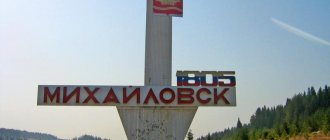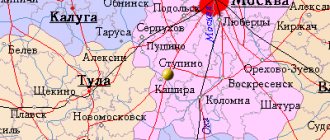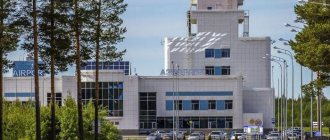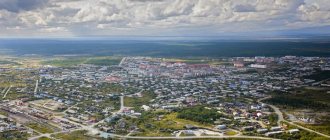Shebekino
(Belgorod region)
OKATO code:
14450
Founded:
1713
City since:
1938 City of regional subordination
Center:
Shebekinsky district
Urban-type settlements, population as of 01/1/2021
| Maslova Pier | 6.0 |
| Telephone code (reference phone) | |
| 47248***** | 42-2-22 |
Deviation from Moscow time, hours:
0
Geographic latitude:
50°25′
Geographic longitude:
36°54′
Altitude above sea level, meters:
110 Sunrise and sunset times in the city of Shebekino
Shebekinsky urban district
According to the approved estimate, the population of the Belgorod region as of January 1, 2021 was 1541.3 thousand people.
In terms of population in the Central Federal District, the Belgorod region is in 4th place after Moscow (12655.1 thousand people), Moscow (7708.5 thousand people) and Voronezh (2305.6 thousand people) regions.
The share of the region's population in the total population of the Central Federal District and the Russian Federation is 3.9% and 1.1%, respectively.
During January-March 2021, were born . In the total number of births, the share of first-borns was 40.3%, second children - 38.5%, third - 14.9%, fourth or more - 6.2%.
The crude birth rate was 7.6 births per 1,000 population.
An increase in the number of births compared to January-March 2020 is noted in urban districts: Starooskolsky - by 74 children and in Valuysky - by 6 children, as well as in 8 municipal districts, the largest of which are: in Borisovsky - by 10 children, Chernyansky - by 8 children, Belgorod and Krasnoyaruzhsky - 6 children each.
The number of deaths in January-March 2021 was 6,560 people. The overall mortality rate of the population was 17.3 deaths per 1000 people.
The number of registered marriages in January-March 2021 amounted to 1580 in the region and increased compared to January-March 2021 by 352, or 28.7%. The number of divorces in January-March 2021 decreased by 166, or 10%, and amounted to 1490. For 1000 marriages in January-March 2021, there were 943 divorces compared to 1349 in January-March 2021.
The total migration population growth in January-March 2021 amounted to 351 people and was largely the result of migration exchange with the CIS countries.
Among the CIS countries, a significant share of migration growth (79.7%) is due to population exchange with Ukraine, Kazakhstan, Uzbekistan, Armenia and the Republic of Moldova.
Migration growth continues in the population exchange with the subjects of the Siberian (69 people), Ural (46 people), Far Eastern (39 people) and North Caucasus (10 people) federal districts.
A negative migration balance is noted in the population exchange with the subjects of the Central (346 people), Southern (67 people), Northwestern (59 people) and Volga (17 people) federal districts.
In January-March 2021, the migration population growth occurred in the territory of 6 urban districts: Grayvoronsky - 163 people, Starooskolsky - 136 people, Yakovlevsky - 129 people, Novooskolsky - 55 people, Shebekinsky - 28 people and Belgorod - 26 people, as well as 6 municipal districts: Belgorodsky - 86 people, Prokhorovsky - 42 people, Borisovsky and Krasnogvardeysky - 25 people each, Volokonovsky - 20 people and Krasnensky - 12 people.
The population census is the primary source of information about the population. The results of the All-Russian Population Census 2021 will make it possible to obtain not only data on the population, but also to assess the socio-economic processes occurring both in the region and in each city and village.
The All-Russian population census is being held in digital format for the first time. The main innovation will be the ability to independently fill out an electronic census form on the State Services portal. When going around residential premises, census takers will use tablets with special software. It will also be possible to take the census at census sites, including in the premises of multifunctional state and municipal service centers.
Map
| Shebekino: maps |
Shebekino: photo from space (Google Maps) Shebekino: photo from space (Microsoft Virtual Earth)
| Shebekino. Nearest cities. Distances in km. on the map (in brackets along roads) + direction. Using the hyperlink in the distance , you can get the route (information courtesy of the AutoTransInfo website) | |||
| 1 | New Tavolzhanka | 8 (10) | SW |
| 2 | Maslova Pier | 12 (13) | Z |
| 3 | Reasonable | 20 () | NW |
| 4 | Tavrovo | 24 () | NW |
| 5 | Dubovoe | 26 (38) | NW |
| 6 | Belgorod | 29 (32) | NW |
| 7 | May | 33 (45) | Z |
| 8 | Northern | 37 () | NW |
| 9 | Streletskoye | 38 (42) | NW |
| 10 | October | 38 (57) | Z |
| 11 | In short | 49 (61) | NE |
| 12 | Builder | 50 (58) | NW |
| 13 | Tomarovka | 55 (60) | NW |
| 14 | Borisovka | 65 (78) | Z |
| 15 | Volokonovka | 67 (77) | IN |
| 16 | Prokhorovka | 69 (94) | WITH |
| 17 | Novy Oskol | 78 (113) | NE |
| 18 | Grayvoron | 87 (109) | Z |
| 19 | Chernyanka | 87 (115) | NE |
| 20 | Valuyki | 88 (120) | IN |
| 21 | Rakitnoye | 88 (98) | NW |
| 22 | Willow | 89 (105) | NW |
| 23 | Urazovo | 89 (133) | SE |
| 24 | Proletarian | 90 (105) | NW |
| 25 | Pristen (Kursk region) | 91 (177) | WITH |
| 26 | Red Yaruga | 97 (114) | NW |
| 27 | Oboyan | 99 (113) | NW |
| 28 | Gubkin | 106 (131) | NE |
| 29 | Belaya (Kursk region) | 109 (126) | NW |
| 30 | Biryuch | 109 (158) | IN |
a brief description of
The city is located at the confluence of the river. Nezhegol in the river Root (near its confluence with the Seversky Donets; Don basin), 28 km southeast of Belgorod. Railway Nezhegol station.
Territory (sq. km): 41
Information about the city of Shebekino on the Russian Wikipedia site
Historical sketch
Sloboda Shibekina (later Shebekina, Shebekino) was founded in 1713. The name was named after the local administrator, Lieutenant Colonel I.D. Shibeko, who led the settlement of this settlement.
I.D. Shibeko acquired land here, built a mill, a distillery and a cloth factory. In the first half of the 19th century. - the property of the Rebinders, who in 1837 built a sugar, distillery and brick factories, and a water mill. There was a Maryinsk agricultural school on the estate to train skilled workers.
The city of Shebekino since 1938
During the Great Patriotic War of 1941-45, it was occupied by Nazi troops on June 14, 1942. It was liberated on February 9, 1943 by troops of the Voronezh Front during the Kharkov operation.
In 1969-72. The villages of Ustinka, Titovka, and Logovoye are included within the boundaries of Shebekino.
Municipal indicators
| Index | 2001 |
| Demography | |
| Number of births, per 1000 population | 7.6 |
| Number of deaths, per 1000 population | 16 |
| Natural increase (decrease), per 1000 population | -8.4 |
| Standard of living of the population and social sphere | |
| Average monthly nominal accrued wages, rub. | 1776.2 |
| Average housing area per inhabitant (at the end of the year), sq.m. | 19.7 |
| Number of preschool institutions, pcs. | 12 |
| Number of children in preschool institutions, thousand people | 1.8 |
| Number of daytime educational institutions (at the beginning of the school year), pcs. | 10 |
| Number of students in daytime educational institutions, thousand people | 5.8 |
| Number of doctors, people. | 183 |
| Number of nursing staff, people. | 563 |
| Number of hospital institutions, pcs. | 3 |
| Number of hospital beds, thousand units | 0.7 |
| Number of medical outpatient clinics, pcs. | 3 |
| Capacity of medical outpatient clinics, visits per shift, thousand units. | 1 |
| Number of registered crimes, pcs. | 536 |
| Persons who committed crimes were identified, persons. | 314 |
| Economy, industry | |
| Number of enterprises and organizations (at the end of the year), pcs. | 665 |
| Construction | |
| Volume of work performed by type of activity “Construction” (until 2004 - volume of work performed under construction contracts), million rubles. | 46 |
| Commissioning of residential buildings, thousand sq.m. of total area | 18.7 |
| Commissioning of residential buildings, apartments | 245 |
| Commissioning of preschool institutions, places | 0 |
| Commissioning of educational institutions, places | 0 |
| Commissioning of hospital facilities, beds | 0 |
| Commissioning of outpatient clinics, visits per shift | 0 |
| Transport | |
| Number of bus routes (in intracity traffic), pcs. | 13 |
| Number of passengers transported by buses per year (in intracity traffic), million people. | 4.9 |
| Connection | |
| Number of residential telephone sets of the city public telephone network, thousand units. | 11.2 |
| Trade and services to the population | |
| Retail trade turnover (in actual prices), million rubles. | 692.2 |
| Retail trade turnover (in actual prices), per capita, rub. | 14822 |
| Public catering turnover (in actual prices), million rubles. | 24.9 |
| Volume of paid services to the population (in actual prices), million rubles. | 133 |
| Volume of paid services to the population (in actual prices), per capita, rub. | 2847.8 |
| Volume of household services to the population (in actual prices), million rubles. | 39.7 |
| Volume of household services to the population (in actual prices), per capita, rub. | 849.3 |
| Investments | |
| Investments in fixed assets (in actual prices), million rubles. | 166.5 |
| Share of investments in fixed assets financed from budgetary funds in the total volume of investments, % | 7.2 |
Data sources:
- Regions of Russia. Main characteristics of the constituent entities of the Russian Federation: statistical collection. Goskomstat of Russia. - M:, 2003.
Economy
Factories: chemical, biochemical, household chemicals, engineering, special vehicle equipment, reinforced concrete products, chalk, finishing materials. Construction materials plant.
Oil factory, pasta and confectionery plant and bakery.
In the Shebekinsky district, cattle and sheep are raised.
Deposits of iron ores, chalk, phosphorites, quartz sands, marls, limestones.
Main enterprises
PRODUCTION OF SOAPS AND DETERGENTS
OJSC "Detergent Plant"
309296, Belgorod region, Shebekino, st.
Moskovskaya, 16A Offers:
Household and technical synthetic detergents
Culture, science, education
Research and Design Institute of Surfactants.
Historical and Art Museum.
Museums, galleries, exhibition halls
Shebekino Historical and Art Museum 309292, Belgorod region, Shebekino, st. Lenina, 93 Phone(s): (47248) 2-7688
Architecture, sights
There are over 30 archaeological sites in the Shebekinsky district, incl. Dmitrievsky archaeological complex (near the village of Dmitrievka) - fortifications, settlements, burial grounds of the 8-9th centuries, Krapivenskoye fortification of the 12-13th centuries. (in the village of Krapivnoye).
Ascension Church (1914) in the village of Zimovenka, Trinity Church (1874) in the village of Murom, Michael the Archangel Church (1873) in the village of Churaevo, Trinity Church (1884) in the village of Bulanovka.
| Population by year (thousands of inhabitants) | |||||||
| 1926 | 1.3 | 1996 | 46.0 | 2008 | 45.6 | 2017 | 42.5 |
| 1939 | 9.4 | 1998 | 46.2 | 2010 | 45.4 | 2018 | 41.9 |
| 1959 | 13.9 | 2000 | 46.6 | 2011 | 44.3 | 2019 | 41.3 |
| 1967 | 21 | 2001 | 46.6 | 2012 | 44.0 | 2020 | 40.9 |
| 1970 | 26.0 | 2003 | 45.1 | 2013 | 43.8 | 2021 | 40.4 |
| 1979 | 39.5 | 2005 | 45.6 | 2014 | 43.6 | ||
| 1989 | 44.6 | 2006 | 45.6 | 2015 | 43.3 | ||
| 1992 | 44.8 | 2007 | 45.6 | 2016 | 42.9 | ||
SHEBEKINO
SHEBEKINO, a city in Russia, in the Belgorod region, the center of the Shebekinsky district. Forms a city district. Population 41.3 thousand people (2019). Located near the state border with Ukraine, on the river. Nezhegol. Railroad station. Road junction.
Story
Founded no later than 1713 by Lieutenant Colonel I.D. Shebeko (Shibeko) as the settlement of Shibekina (Shebekina). At the beginning of the 19th century. – 1928 volost center of the Belgorod district of the Kursk province. Since the beginning of the 20th century. Shebekino village. In 1912, a foot-and-mouth disease bacteriological station was opened in Shebekino, which studied a wide range of infectious diseases. After the signing of the Brest-Litovsk Peace Treaty of 1918, in April of the same year, Belgorod district (including Shebekino) was occupied by German troops and until the beginning of 1919 was part of the Ukrainian state of Hetman P. P. Skoropadsky. Since 1938 the city. During the Great Patriotic War it was occupied by German troops (June 1942 - February 1943). Liberated on February 9, 1943 by the troops of the Voronezh Front during the Kharkov operation of 1943. Regional center of the Central Chernozem (1928–34), Kursk (1934–54), Belgorod (since 1954) regions of the RSFSR (since 1991 of the Russian Federation). Since 1963 it has been a city of regional significance.
Architecture. Cultural centers
The following have been preserved: the ensemble of the former sugar factory of the Rebinders (from 1839) with production buildings (1888; with neo-Gothic elements) and the office building (late 19th century), the rotundal tomb of the Rebinders (1916). Palace of Culture in the style of Soviet neoclassicism (1957). Church of Saints Cosmas and Damian (1990–2006), in honor of the icon of the Mother of God “Joy of All Who Sorrow” (2004–06), St. Nicholas the Wonderworker (2007–14). Monuments: A. A. Rebinder (2011, sculptor V. S. Prisekin), I. D. Shebeko (2016, sculptor D. F. Gorin). History and Art Museum (opened in 1986).
Farm
Production of equipment for the food industry ("Shebekinsky Machine-Building Plant"), agricultural machinery ("Promzapchast", including), paint and varnish products (paint and varnish and "Belogorye Paints"), synthetic sapphires for electronic devices and LED equipment ("Belgorodsky"), industrial refrigeration and air conditioning equipment (), cleaning products for gas turbines, internal combustion engines, electrical equipment (“Dexan”). Center for the chemical industry of the region, production of oilfield chemistry reagents, detergents and other chemicals (“Shebekinskaya Industrial Chemistry”), detergents and cutting fluids (“Analytic-Chem”), resins and additives for paints and protective coatings (German “ Allnex"), foam concentrates for fire extinguishing) and paint and varnish products ("Yamshchik", "Tsibel" and "Belogorye Paints"). Also production of corrugated cardboard and corrugated packaging ("Shebekinsky Cardboard"), chalk ("Shebekinsky Chalk Plant", group), special clothing and school uniforms ("Kubera"), pasta and confectionery products ("Pasta and Confectionery Plant"), drinking milk and dairy products (“Shebekinsky Butter Factory”), frozen vegetables (), mixed feed, mineral mixtures, protein cones and its branch “Evomix”), pet food (“SPF Rus” in the French structure), fish feed (“LimKorm "), and etc.
New in blogs
I read an article in SR NEZHEGOL STILL REMEMBERS, what kind of people’s power we have lost , the name of the city of Shebekino seemed unusually familiar.
I plunged into the depths of the Internet and found so many interesting things that I decided to share with you, my friends.
In 1654, on the site of a suburb of modern Shebekino, the fortress city of Nezhegolsk was built, which was part of the Belgorod defensive line. The Belgorod defensive line for a long time was the southern border of the Russian state, on which the Crimean Tatars from the south and the Polish-Lithuanian troops from the west were holding out.
The date of origin of Shebekino is considered to be 1713, when it was first marked on Russian maps. The settlement received its name from the surname of the first landowner, who settled his serfs here and founded the village. Lieutenant Colonel Ivan Dmitrievich Shibeko, who was one of the participants in the Battle of Poltava, bought 160 quarters of land from the nobleman N.R. Maslova. He settled his peasants on the right bank of the Nezhegol River. On his estate, in addition to the estate, he also built a mill.
A.V. Makarov (1675-1750)
In 1716 I.D. Shibeko and his wife died without leaving children. The entire estate passed into rental ownership to Alexei Vasilyevich Makarov, the former cabinet secretary of Peter I. He constantly accompanied Peter I on trips. Having great influence on the course of government affairs, Makarov made a brilliant career. For his assistance in the enthronement of Catherine I, he was awarded the rank of Privy Councilor and large estates. During the reign of Catherine I, Alexey Vasilyevich enjoyed great authority and influence. He took an active part in the work of the Supreme Privy Council. In 1723 he bought from V.V. Titov and Titovka* with a cloth factory there. At that time there were 1 master and 3 workers working at this plant. Subsequently, Titovka belonged to Makarov’s granddaughter, who married Lieutenant Colonel Mikhail Ivanovich Batezatul. After the death of A.V. Makarova Sloboda Shibekina became the object of many disputes. Its owners changed several times. In 1785, the settlement of Shibekina (later Shebekina) came into the possession of Ekaterina Petrovna Baryatinskaya (1750-1811)
General of Infantry Alexander Alekseevich Rebinder (1826-1913)
Since 1836, Shebekino was the family estate of the Rebinders. This family had a great influence on the development of the Shebekina settlement. Industry began to develop in the settlement from the middle of the 19th century, when in 1839 the owner of the settlement, Alexey Maksimovich Rebinder, built a primitive sugar factory on the banks of the Nezhegol River, which was reconstructed and enlarged in 1848. The plant was named Alekseevsky (named after its owner). In 1847, a brick factory was built, which was intended to provide the enterprise with building materials. In 1850 General Rebinder's beet sugar factory has already become one of the best in the Kursk province. In 1867, Alexander Alekseevich Rebinder (son of A.M. Rebinder) built mechanical workshops for the repair of agricultural equipment. In 1875, he also built a distillery and a two-story mill with a butter churner. In 1888, the sugar factory was reconstructed. The main and two side buildings were built. A water pump has been installed. Shebekinsky and N-Tavolzhansky sugar factories already in 1890 produced products worth 1,575 thousand rubles. Such an increase in product volumes dictated the need to resolve the issue of simplifying the methods of its removal from the plant for delivery to customers. In 1896, the construction of the railway line from Belgorod to Kupyansk was completed, on which the Nezhegol passenger station appeared. From it, access railway tracks were made to the Botkino freight station in N-Tavolzhanka and to the Rebinderovo freight station in the Shebekino settlement.
The use of the latest machinery at the sugar factory, as well as the use of new methods of field cultivation and agricultural technology in growing sugar beets, created a need for educated and skilled workers. Therefore, Alexander Alekseevich, together with his brother Nikolai, founded an agricultural school for workers for 120 people in Shebekino in 1875. It accepted students at least 14 years old, who were taught by 3 teachers. They were trained in field work, carpentry and plumbing. This institution was closed and was completely dependent on its founders. Since 1892, Alexander Alekseevich Rebinder became the trustee of this school, which became known as the Maryinsk Lower Agricultural School of the 1st category.
Baron N.A. Rebinder (1863-1918)
Baron A.A. Rebinder (1869-1918)
Shebekinsky sugar factory 1908 Power plant
Mechanical workshops 1913
At the beginning of the 20th century, the existing Shebekinsky industrial enterprises expanded significantly and new ones appeared.
In 1905, A.A. Rebinder built a power plant at a sugar factory, which provided electricity not only to sugar and other enterprises, but also to residential buildings. In 1907, a steam locomotive was purchased from Berlin for the sugar factory. In 1909, the sugar factory was reconstructed. Daily sugar production amounted to 15 wagons of 900 poods each. The income received from the sugar factory in 1915 increased from 2 to 3 million rubles per year. The Alekseevsky / Shebekinsky / sugar factory became the largest in Russia and was equipped with the best equipment at that time. In 1914, A. Rebinder built a tannery and a slaughterhouse. Until 1917, 1,385 permanent workers worked at the tannery and sugar factories.
Before the revolution, in the Shebekino settlement, in addition to sugar and leather factories, there were alcohol, chalk and brick factories, as well as agricultural workshops.
Family coat of arms of the Rebinders. House of A.A. Rebindera
In the post-war years, the city of Shebekino developed very quickly as a city of chemists. Construction of the chemical plant began in 1948, and already in 1953 the plant went into operation as the first chemical industry in the USSR for fatty alcohols and synthetic fatty acids, producing detergents and fat substitutes based on surfactants. In Soviet times, such washing powders as “Crystal”, “Novost”, “Neptune” were widely known. In addition, liquid detergents “Alfia”, “Fairy” and “Iva” were also produced. After the construction of the plant, a high pipe one hundred and two meters long began to rise above the city, which is still one of the most significant city structures.
Monument to Baron A. Rebinder in the city of Shebekino, Belgorod region.
When preparing the page, materials from the book of the senior researcher, department of the Funds of the Shebekino Museum of Local Lore, E.N. Pozdnyakov “The History of Shebekin 1713-1917”
How to get there
- By car from Moscow, 700 km along the M-2 “Crimea” highway, in ten and a half hours. The second option is to take the M-4 Don toll highway to Yelets. Then drive through the city and head towards the P-298 highway. Then turn right and drive until the turn to the village of Tim, Kursk region. Pass the town of Korochu and go straight to your destination. This route is more difficult than the first. Therefore, it is better to use a navigator. Travel time is an hour less than in the first case.
- By bus Belgorod - Shebekino in one hour.
- By suburban electric train No. 6107, daily at 07:40 from Belgorod to Nezhegol station.
Attractions
The bronze monument to the founder of the city of Shebekino, Ivan Dmitrievich Shibeko, was opened on July 30, 2021, on the day of the celebration of the 88th anniversary of the founding of the Shebekinsky district.
For decades now, the Shebekinsky Museum of History and Art has been considered the most significant among the regional museums in Belogorye. The museum's exhibition is housed in five halls and tells about the main historical events that took place in the region, from its origins to the present day. Among the most ancient exhibits are the remains of mammoths, stone tools, objects found in ancient burials, weapons, coins and orders. You can also see photographs taken in the city of Shebekino before 1917, and paintings by famous artists. The museum collection stores 40 thousand different items.
The two-story brick office building of the Rehbinder Sugar Factory was built in 1914. Located on Chemists Square. In Soviet times - a sugar office and the management of the Shebekinsky chemical plant.
All attractions of Shebekinsky district:
- Center for Traditional Culture and Museum of the Village of Kupino
- Krapivenskoe settlement
- Dmitrievskoe ancient settlement - archaeological complex of the Saltovo-Mayatsk culture
- Remains of the fortified city of Nezhegolsk
- Church of the Life-Giving Trinity 1886 Murom village
- Temple of Michael the Archangel 1892 in the village of Churaevo
- Church of Peter and Paul 1870 In the village of Neklyudovo
- State Nature Reserve "Bekaryukovsky Bor"
- Titovsky Bor - a tract on the outskirts of Shebekino
- Tract "Bor on Chalk"
- Pansky oak
- Beam Kamenny Log







